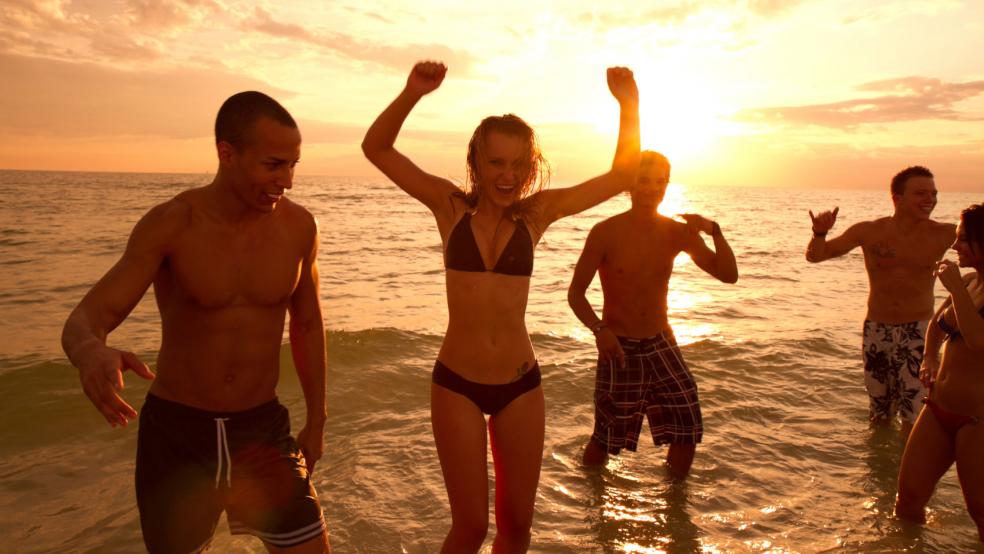There is a bigger reason than premature aging to avoid the sun this summer. Incidents of skin cancer are on the rise, and protecting yourself from the damaging effects of the sun is more important than ever.
Here's why you should care. More than 2 million Americans develop skin cancer each year. Melanoma, the deadliest form of skin cancer, is the most common form of cancer for teenagers and young adults between 15 and 29 years old, and the leading cause of cancer death in women ages 25 to 29. Since 2000, the rates of new melanoma cases have climbed by 2 percent every year.
Though there are a multitude of effective products on the market, the federal government has also been slow to approve newer and stronger sunscreen ingredients that are already available outside the U.S. An FDA spokesperson said on Thursday that the agency “recognizes the public health importance of sunscreen use” and has “prioritized reviewing the safety and effectiveness of additional sunscreen ingredients as quickly as possible given its resources.”
Related: CHART: How Climate Change Is Affecting Your Region
New technologies beyond plain-vanilla sunscreen are sprouting up to help you avoid skin damage – and in the worst case scenario, cancer.
In 2008, 60 percent of adults over age 25 said they usually adopt sun-protective behaviors such as using sunscreen, sun-protective clothing or staying in the shade, according to the Centers for Disease Control and Prevention. But the younger people are, the less they protect their skin. Only 45 percent of Americans between ages 18 and 24 used one or more protective methods. Among high school students, 14.4 percent of girls and just 7.3 percent of boys reported routinely using a sunscreen with an SPF 15 or higher.
“In general, the younger age group does tend to adopt riskier sun behavior,” said David Andrews, chief scientist at Environmental Working Group. “Tan skin is considered a sign of health and beauty.”
Related: What Climate Change Is Really Costing You
Even if all Americans regularly wore sunscreen, the most protective products are not yet available to us.
“The last time a new sunscreen product was approved was in 1999,” said Yianni Varonis, spokesman for U.S. Sen. Sherrod Brown (D-OH), who announced earlier this month that he’s cosponsoring bipartisan legislation to strengthen the potency of sunscreen found in the U.S. The legislation would expedite the review process of sunscreen ingredients by the Food and Drug Administration. These products are manufactured in the U.S. in many cases but can’t be sold legally here, yet they’re widely available in Canada and Europe.
“The U.S. sunscreen market is behind,” Varonis added. The legislation would not just give consumers for choices for sunscreen products, it would also boost revenue for those U.S. companies manufacturing the ingredients and, in turn, help create jobs.
High Tech and the Sun
The corporate world is fast trying to grab a piece of the sunscreen industry, which is estimated at $1.5 billion. Here are 5 innovations to know about:
- Vending machines can dispense a 10-second sunscreen mist for $2. The mist machines come in different formats: Either you stand in a booth that rinses you and sprays you for a few seconds, or you use a pump to spray yourself. These machines are currently in operation in Florida, including one in the Central Florida Zoo.
- The first-ever drinkable sunscreen was recently released and sells for $30 for a 3.38-oz bottle. The makers of Harmonized UV Water claim that by simply drinking a few sips of the product along with water an hour before sun exposure and taking additional doses every three hours, you’re “covered” for the day. It’s not yet FDA approved - and many suspect it sounds far too good to be true. “I haven’t seen anything credible on drinkable sunscreen,” said EWG’s Andrews.
- A myriad of apps for smartphones remind you when to reapply sunscreen or give you UV information about specific locations. “There’s a role these apps can have in terms of monitoring UV exposure,” said Andrews. “Having feedback on whether or not you are overexposed or whether you need to reapply is a good thing.”
- Some UV wristbands fulfill more or less the same function. Color-changing wristbands alert you to reapply sunscreen or seek shade. They’re usually single use only, and at a couple of dollars each, this option can get pricey.
- The June bracelet by Netatmo isn’t available yet, but seems promising. It’s a $100 jewelry-looking wristband that measures your exposure to the sun throughout the day and is linked to your smartphone, which sends you real-time advice on sun protection.
Fun-in-the-Sun Rules
If you decide to stick to good old sunscreen, remember some rules of thumb. The easiest way to choose sunscreen is to look at the sun protection factor, or SPF. The level of SPF protects against UVB, which gives you sunburns. To protect against the long-term effects of the sun from UVA, look for mineral ingredients.
Here are some basic sun protection rules:
- Don’t apply sunscreen on babies younger than six months. Keep them out of the sun, period.
- For everyone else, rely primarily on clothing and stay in the shade, especially during the most intense hours of the day.
- Look for mineral-based protection that includes zinc oxide, titanium dioxide or 3 percent avobenzone.
- Avoid sunscreens that contain oxybenzone and vitamin A, which may increase skin cancer.
- Reapply sunscreen every couple of hours, or more often if you’re swimming or sweating.
- Wear sunglasses and a hat.
When in doubt about a safe product, refer to this list of sunscreens that passed the EWG test this year.
Top Reads from The Fiscal Times:



